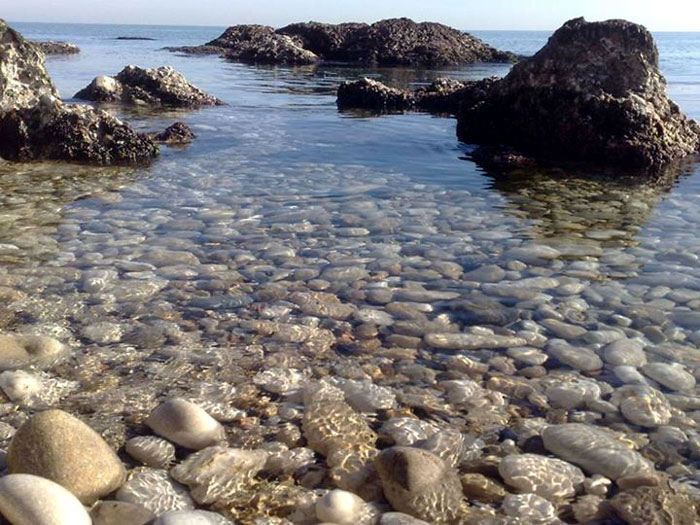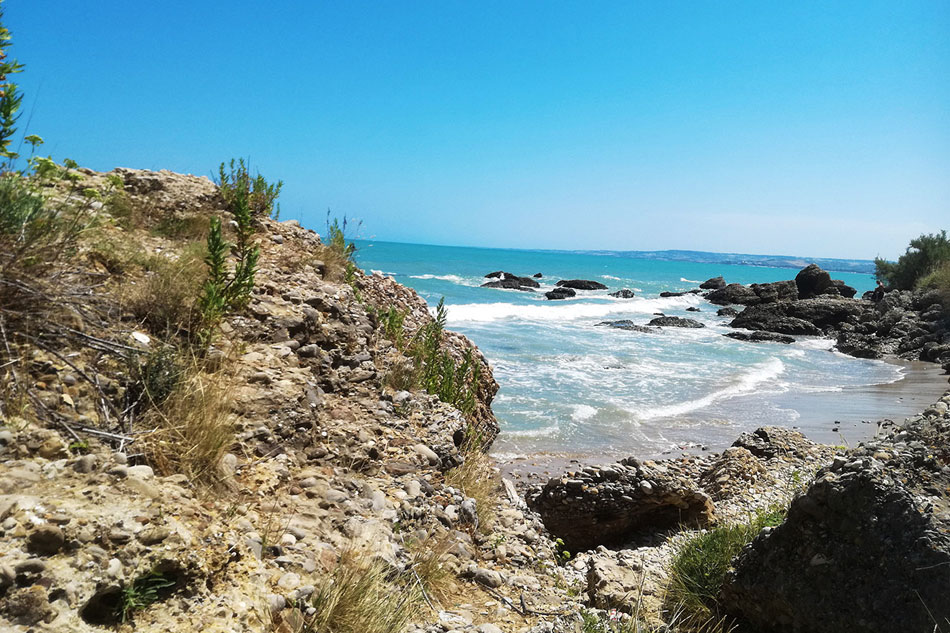Scogliera e spiaggia di Casarza
Località Casarza è nel cuore del Sistema di Aree Protette della Costa Teatina ed è stata pensata e
realizzata per salvaguardare la presenza di ben 300 specie animali, su circa 800 censite in Abruzzo. La
spina dorsale di quest’area è l’ex tracciato ferroviario che permetterà di percorrere a piedi ed in
bicicletta l’intera costa chietina. Casarza rappresenta un tassello importante di questo “corridoio”
faunistico e botanico. Qui svernano e sostano molte specie di uccelli come il Piro, i Piovanelli, i Chiurli, le
Ballerine Bianche, Nere e Gialle, i Cormorani, varie specie di Gabbiani, lo Smergo minore, varie specie di
anatre come le Morette e gli Svassi. In alto è facile osservare il volo di rapaci come Gheppi e Poiane,
provenienti dal vallone dell’Anghella, che scende al mare dalla città di Vasto. I Cormorani sono, per
esempio, facilmente osservabili in inverno sui pali dei trabocchi che costituiscono altro aspetto
caratteristico della costa vastese e teatina. Le specie botaniche più importanti sono rappresentate
soprattutto dalla vegetazione delle rupi marittime rappresentata dal Finocchio di Mare, il Mirto ed alberi
di alto fusto come la Roverella.
La scogliera di Casarza, dotata di una comoda area parcheggio, offre un mare limpidissimo e trasparente
su cui si aprono, accanto ad un approdo di barche da piccola pesca, delle splendide calette invitano a
proseguire il percorso di scoperta verso sud fino a località Trave, dove con la bassa marea è possibile
vedere i resti del porto romano di Histonium che affiorano dall’acqua.
Vasto
Reef and beach of Casarza
Casarza is in the heart of the System of Protected areas of the Teatina Coast, and was conceived and
established to protect the presence of 300 animal species, among the approximately 800 species
annotated in Abruzzo. The backbone of this area is the former railway track that will allow access to the
entire Chieti coast on foot or by bike. Casarza represents an important link in this wildlife and botanic
“corridor.” We can find a great number of bird species who pass the winter here: the Common Sandpiper,
Red Knots, Eurasian Curlews, the white, black and yellow Wagtails, Cormorants, various species of
seagulls, the Merganser, and various species of ducks such as the Scaups and the Grebes. Up in the sky
you can watch the flight of prey birds such as common Kestrels and common Buzzards, coming from the
deep valley of the Anghella that slopes down to the sea from the city of Vasto. In winter, the Cormorants
can easily be seen perching on the poles of the trabocchi which constitute another characteristic aspect
of the Vasto and Chieti coasts. The most important botanic species are represented above all by the
vegetation of the sea cliffs such as the Sea Fennel and Myrtle, and high trunk trees such as the Downy
Oak.
Endowed with a comfortable parking area, the Casarza Reef offers a crystal-clear sea with wonderful
bays, equipped with dockings for small fishing boats. It is a tempting invitation to pursue the
adventurous route towards south up to Trave, where at low tide the remains of the Roman port of
Histonium emerge from the water.



